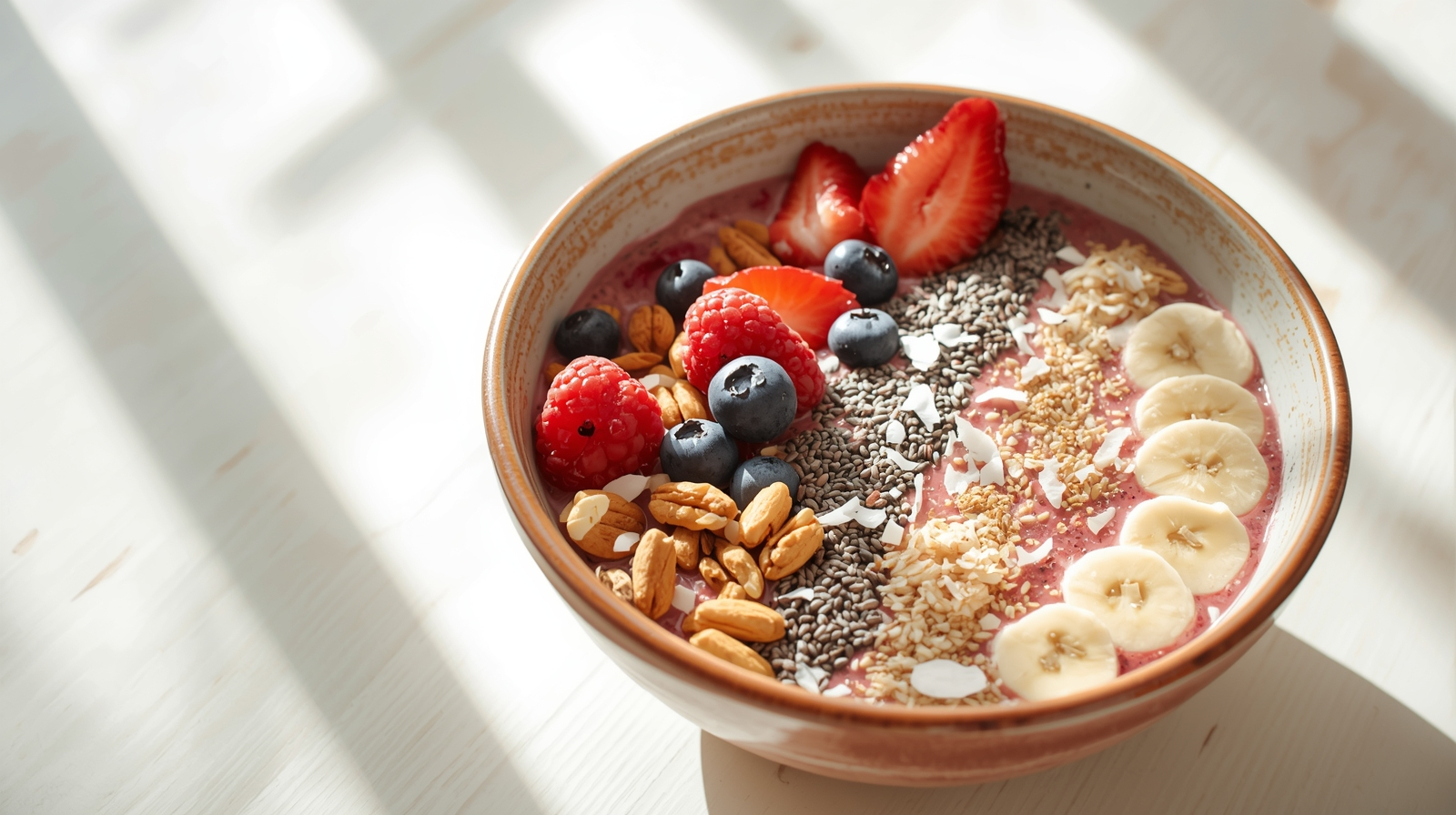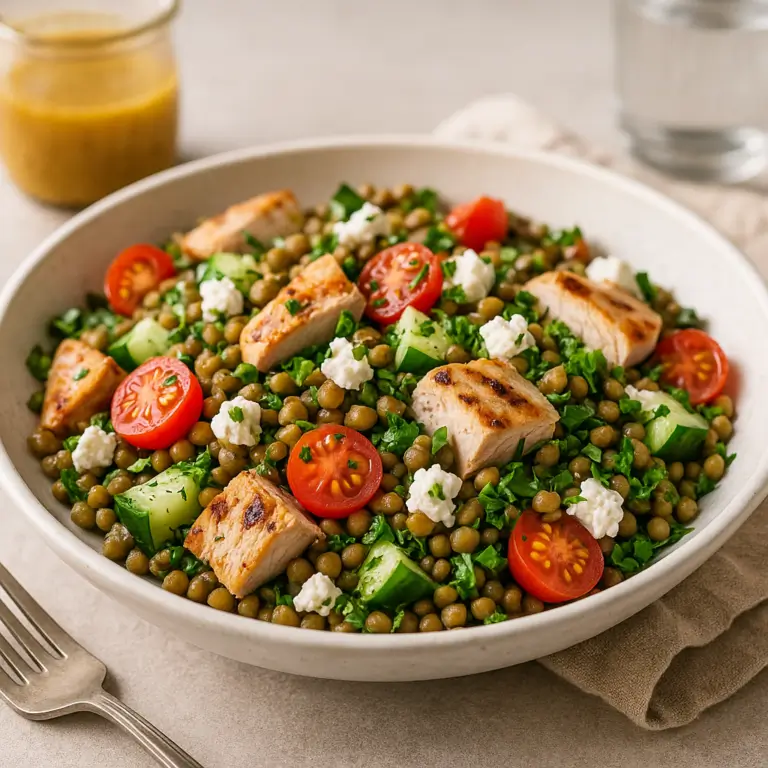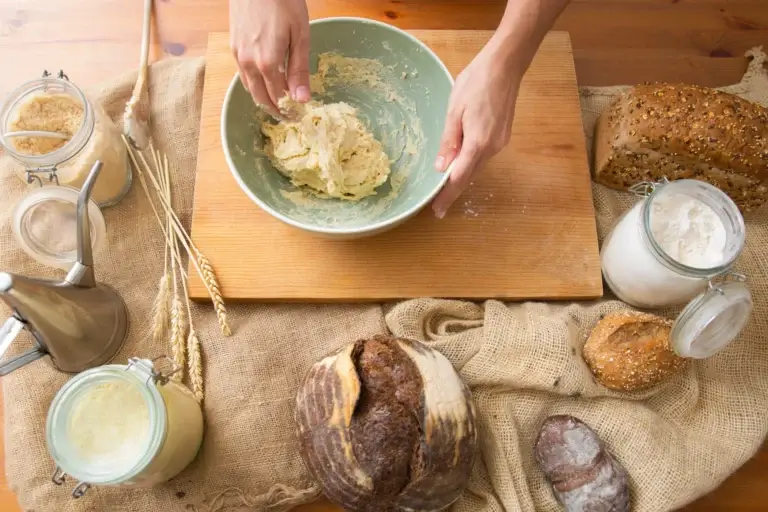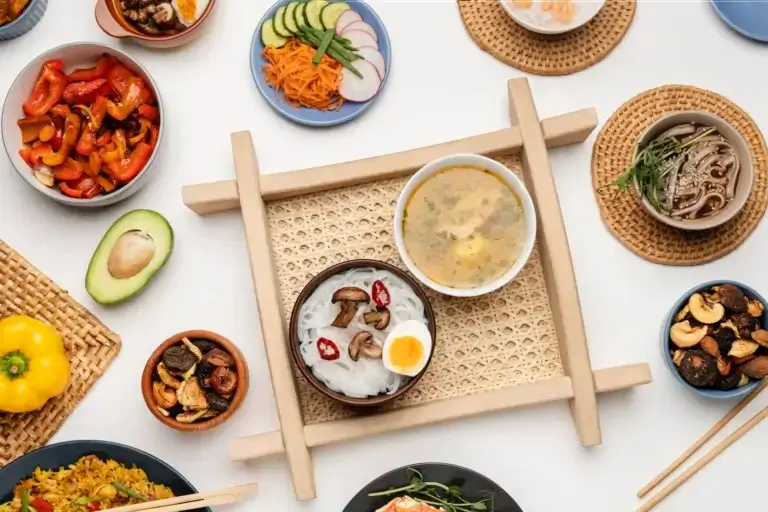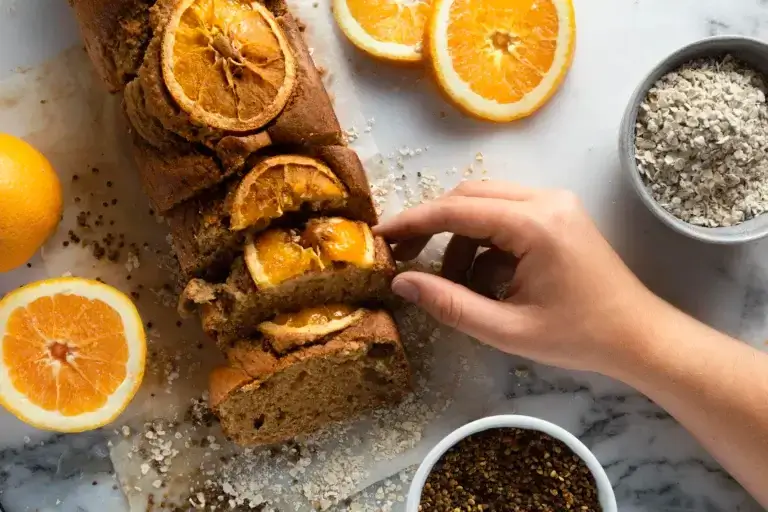Easy High Protein Breakfast Smoothie Bowl for Beginners
Starting your day with a high protein breakfast smoothie bowl for beginners is one of the easiest ways to fuel your body with nutrients while keeping things simple and delicious. Whether you’re new to healthy eating or just looking for a quick breakfast solution, smoothie bowls are incredibly forgiving and endlessly customizable. This guide will walk you through everything you need to know to create the perfect protein-packed smoothie bowl, even if you’ve never made one before.
Table of Contents
After the step-by-step recipe, dive into enriched content full of tips, tricks, and variations to elevate your recipe.
Recipe Overview
| Prep Time | Cook Time | Total Time | Servings |
|---|---|---|---|
| 5 mins | 0 mins | 5 mins | 1 smoothie bowl |
Ingredients for a Beginner-Friendly Smoothie Bowl
The beauty of smoothie bowls lies in their simplicity. You don’t need exotic ingredients or expensive supplements to create something delicious and nutritious.
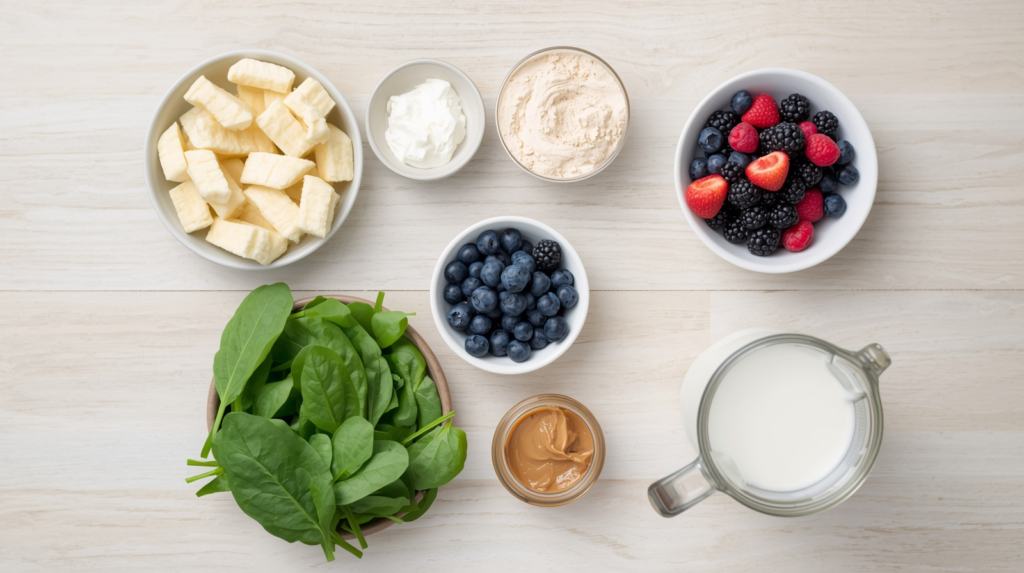
Basic ingredients list
Here’s what you’ll need for a basic high protein smoothie bowl:
- 1 frozen banana – Provides natural sweetness and creamy texture
- 1/2 cup Greek yogurt – Delivers 10-15g of protein and probiotics
- 1 scoop protein powder (vanilla or unflavored) – Adds 20-25g of protein
- 1/2 cup frozen berries (blueberries, strawberries, or mixed) – Packed with antioxidants
- 1/4 cup milk or milk alternative – Helps achieve the right consistency
- 1 tablespoon nut butter (optional) – Adds healthy fats and extra protein
- Handful of spinach (optional) – Boosts nutrients without affecting taste
Optional toppings
Toppings add texture, flavor, and extra nutrition to your bowl:
- Fresh fruit slices (banana, berries, kiwi)
- Granola or muesli for crunch
- Chia seeds or hemp hearts
- Coconut flakes
- Sliced almonds or other nuts
- Dark chocolate chips
- Bee pollen or cacao nibs
Substitution tips
Don’t have all the ingredients? No problem! Smoothie bowls are extremely adaptable. Swap Greek yogurt for cottage cheese, skyr, or plant-based yogurt. Use any frozen fruit you have on hand – mango, peaches, or pineapple all work beautifully. If you don’t have protein powder, add an extra 1/2 cup of Greek yogurt or 2 tablespoons of nut butter. For the liquid, any milk works: dairy, almond, oat, soy, or even coconut water.
How to Make This Smoothie Bowl (Step-by-Step)
Making a smoothie bowl is straightforward, but a few techniques will help you achieve that perfect thick, spoonable consistency that sets bowls apart from regular smoothies.
Step 1: Add your liquid to the blender first, followed by the Greek yogurt and protein powder. This helps stop the powder from settling at the bottom.
Step 2: Add your frozen fruit and banana. Using frozen fruit is key to achieving a thick consistency.
Step 3: Start blending on low speed, then gradually increase to high. Use the tamper tool if your blender has one, or stop and scrape down the sides as needed.
Step 4: Blend until smooth but thick – it should be much thicker than a drinkable smoothie. The texture should resemble soft-serve ice cream.
Step 5: Pour into a bowl and immediately add your toppings while the smoothie is still cold and thick.
Blending tips for beginners
If you’re struggling to blend, resist the urge to add too much liquid. Instead, use the pulse function and be patient. Add liquid one tablespoon at a time only if absolutely necessary. A high-powered blender makes this process easier, but even basic blenders can work if you’re patient and use fully frozen fruit.
Texture and consistency tips
The secret to a perfect smoothie bowl texture is using minimal liquid and frozen ingredients. If your bowl turns out too thin, add a handful of ice cubes or more frozen fruit and blend again. If it’s too thick to blend, add liquid very gradually. Remember, you want it thick enough to eat with a spoon, not drink through a straw.
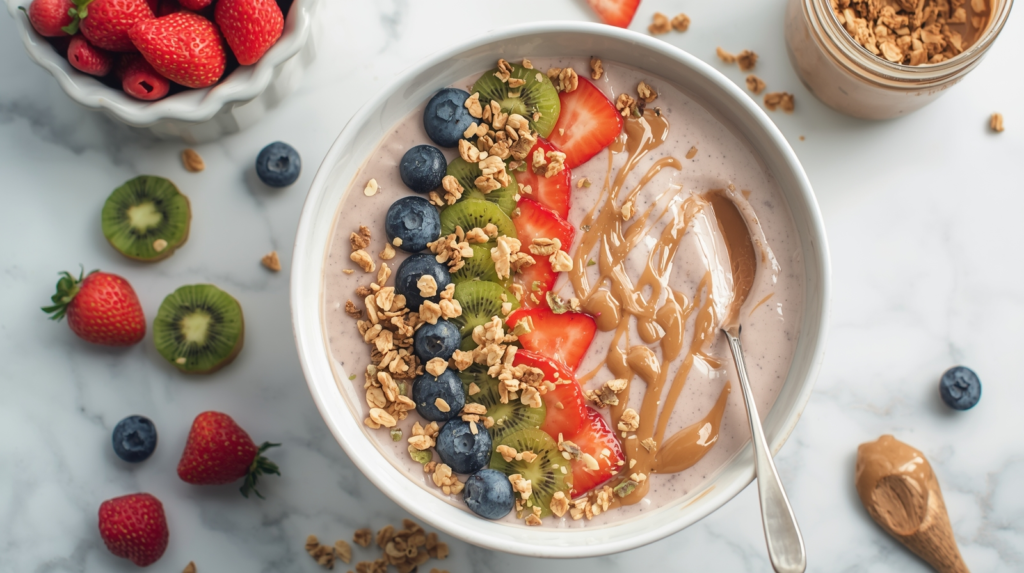
Nutritional Information (per serving)
| Nutrient | Amount | % Daily Value* |
|---|---|---|
| Calories | 350 kcal | 17% |
| Protein | 30 g | 60% |
| Carbohydrates | 40 g | 13% |
| Dietary Fiber | 7 g | 28% |
| Sugars | 18 g | — |
| Total Fat | 8 g | 10% |
| Saturated Fat | 1.5 g | 8% |
| Sodium | 150 mg | 6% |
“Ready to unlock the expert tips and insider secrets that turn an ordinary smoothie bowl into a delicious, protein-packed breakfast masterpiece? Keep reading.”
Why Choose a High Protein Breakfast Smoothie?
Protein is an essential macronutrient that plays a crucial role in keeping you satisfied, supporting muscle recovery, and maintaining steady energy levels throughout your morning. Unlike traditional sugary breakfasts that leave you crashing by mid-morning, a high protein smoothie bowl provides sustained energy and helps you feel fuller for longer.
Benefits of high-protein breakfasts
Starting your day with adequate protein offers numerous advantages. Protein helps stabilize blood sugar levels, preventing those energy spikes and crashes that come with carb-heavy breakfasts. It also supports muscle maintenance and growth, which is especially important if you exercise regularly. Additionally, protein has a high thermic effect, meaning your body burns more calories digesting it compared to fats or carbohydrates. Studies have shown that eating protein at breakfast can reduce cravings and snacking throughout the day, making it easier to maintain a healthy weight.
Ideal for fitness, weight loss, or energy
High protein smoothie bowls are incredibly versatile for different health goals. If you’re focused on fitness, the protein supports muscle recovery after workouts. For those pursuing weight loss, the combination of protein and fiber keeps you satisfied with fewer calories. And if you simply need reliable energy to power through busy mornings, the balanced nutrition in a smoothie bowl delivers exactly that. Best of all, they take just minutes to prepare, making them perfect for hectic schedules.
How to Boost the Protein Even More
If you’re looking to maximize protein content, there are several simple ways to increase the amount without compromising taste.
Protein powder suggestions
Protein powder is the easiest way to boost your smoothie bowl’s protein content. Whey protein is quickly absorbed and has a complete amino acid profile, making it ideal post-workout. Look for brands with minimal additives and natural sweeteners. Vanilla and unflavored varieties work best for smoothie bowls as they don’t overpower other flavors.
Greek yogurt vs plant-based
Greek yogurt provides about 15-20 grams of protein per cup and creates an incredibly creamy texture. It also contains probiotics for gut health. Plant-based eaters can use soy yogurt, which typically offers the most protein among dairy-free options (6-8g per serving). Pea protein-based yogurts are another excellent choice, offering similar protein content to Greek yogurt.
Add-ins: chia, nut butter, oats
Each tablespoon of chia seeds adds about 2 grams of protein plus omega-3 fatty acids and fiber. Nut butters provide 3-4 grams of protein per tablespoon along with healthy fats that help keep you satisfied. Adding 1/4 cup of rolled oats before blending contributes about 5 grams of protein and makes your bowl even more filling. These additions also improve the texture and make your breakfast more substantial.
Variations You Can Try
Once you’ve mastered the basic recipe, experimenting with variations keeps things interesting and helps you discover new favorite combinations.
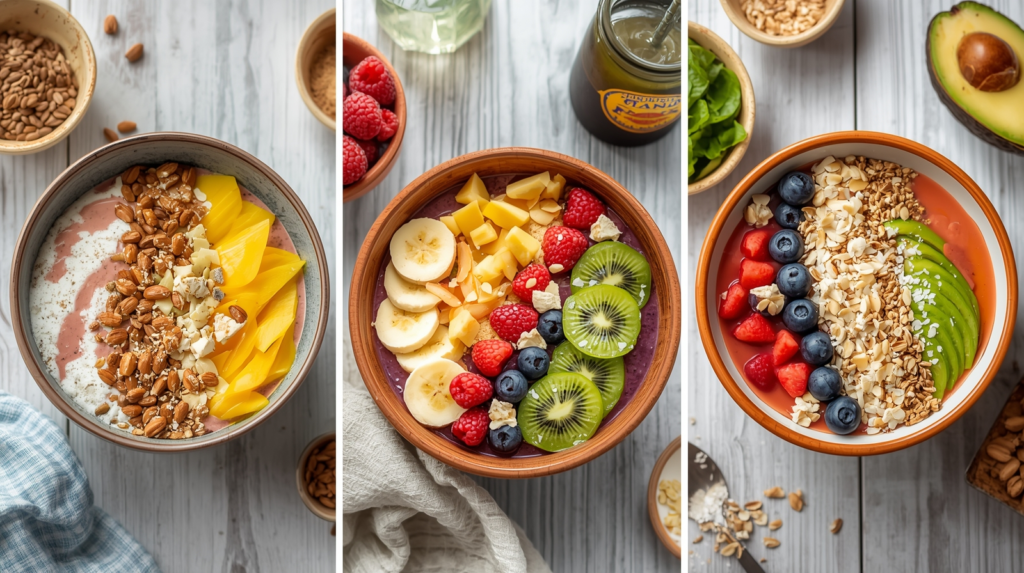
Vegan option
Replace Greek yogurt with coconut yogurt or soy yogurt. Use plant-based protein powder (pea, hemp, or brown rice protein work well). Substitute dairy milk with almond, oat, or soy milk. Choose nut butter instead of honey for sweetness, and top with seeds instead of bee pollen. This version can easily provide 20+ grams of protein using the right ingredients.
Tropical version
Transform your bowl into a tropical paradise by using frozen mango, pineapple, and banana as your fruit base. Add coconut milk as your liquid and use vanilla protein powder. Top with fresh kiwi slices, coconut flakes, macadamia nuts, and passion fruit. This variation tastes like a vacation while still delivering substantial protein.
Low-carb/keto version
For a lower-carb option, skip the banana and use half an avocado for creaminess instead. Choose berries as your fruit since they’re lowest in sugar. Use unsweetened almond milk and full-fat Greek yogurt or coconut cream. Add MCT oil or extra nut butter for healthy fats. Top with nuts, seeds, and unsweetened coconut. This version keeps carbs under 15 grams while maintaining high protein.
High Protein Breakfast Smoothie Bowl for Beginners: Tips for Success
Starting with smoothie bowls can feel intimidating, but these practical tips will set you up for success from day one.
Prep frozen fruit packs: Spend 20 minutes on Sunday portioning frozen fruit into bags or containers. This makes morning preparation effortless and ensures you always have smoothie bowl ingredients ready.
Invest in a good blender: While not essential, a quality blender makes the process much smoother. Look for models with at least 1000 watts of power and a tamper tool.
Don’t overthink toppings: Start simple with just 2-3 toppings. You don’t need to create Instagram-worthy art to enjoy the nutritional benefits.
Adjust sweetness gradually: Taste before adding sweeteners. Frozen bananas and berries often provide enough natural sweetness, especially when combined with flavored protein powder.
Make it your own: There’s no “wrong” way to make a smoothie bowl. Experiment with different ingredients and find combinations you genuinely enjoy eating regularly.
Consider meal prep: You can even prep entire smoothie bowl ingredients in advance, freeze them in bags, and just blend when ready to eat.
FAQ: High Protein Breakfast Smoothie Bowls
How much protein should be in a breakfast smoothie bowl?
Aim for at least 20-30 grams of protein in your breakfast smoothie bowl for optimal satiety and muscle support. This amount helps keep you full until lunch and provides substantial nutritional benefits. Combining Greek yogurt (15g), protein powder (20-25g), and nut butter (4g) easily achieves this target. Adjust based on your individual needs, activity level, and overall daily protein goals.
Can I make smoothie bowls without protein powder?
Absolutely! While protein powder is convenient, it’s not essential. Increase Greek yogurt to 1 cup for about 20 grams of protein, add 2 tablespoons of nut butter for an extra 8 grams, and include 1/4 cup of oats for 5 more grams. Cottage cheese, silken tofu, and hemp hearts are other excellent protein-rich additions that work without protein powder.
What’s the difference between a smoothie and a smoothie bowl?
The main difference is consistency and presentation. Smoothie bowls are much thicker – thick enough to eat with a spoon rather than drink through a straw. They use less liquid and more frozen ingredients to achieve this texture. Smoothie bowls are also topped with various ingredients that add texture, nutrients, and visual appeal, making them more of a complete meal than a drink.
How do I make my smoothie bowl thicker?
Use fully frozen fruit, minimize liquid (start with just 1/4 cup), and add frozen banana for natural thickness. Blend on high speed but avoid over-blending, which can create heat and thin the mixture. If your bowl is too thin, add ice cubes, more frozen fruit, or a tablespoon of chia seeds and blend briefly. The key is patience – use your blender’s tamper and resist adding extra liquid.
Start Your Morning Right
Creating the perfect high protein breakfast smoothie bowl for beginners is easier than you might think, and the benefits are truly transformative. With just a few simple ingredients and five minutes of prep time, you can enjoy a nutritious, satisfying breakfast that supports your health goals and tastes absolutely delicious.
The beauty of smoothie bowls lies in their versatility – once you master the basic technique, you can customize them endlessly to suit your preferences, dietary needs, and whatever ingredients you have on hand. Don’t be afraid to experiment and make mistakes; that’s how you’ll discover your favorite combinations.
Ready to give it a try? Start with the basic recipe tomorrow morning and see how you feel. Both your body and your taste buds will appreciate it! We’d love to hear about your experience – drop a comment below sharing your favorite smoothie bowl combination or any questions you have. And if you found this guide helpful, share it with friends who might benefit from an easy, protein-packed breakfast solution.
Leave a Review
There are no reviews yet. Be the first one to write one.

